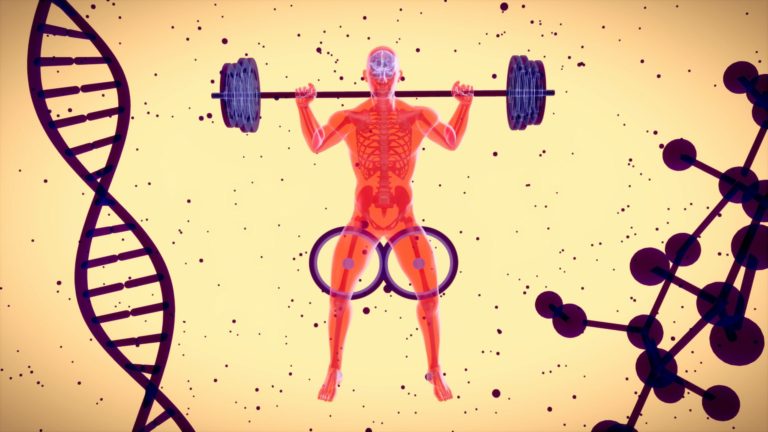Table of Contents
Whether you are a beginner, with not much experience in Taekwondo, or a seasoned practitioner, I hope you will learn (or remember) something from the information presented here to help you improve your front kick in Taekwondo or any other Martial Art. Videos of this and other techniques are available on the website and the YouTube channel. You will find the links below.

You can use the front kick for a variety of situations, but it depends on what you want to achieve. For example, you may be in class, at a competition or in a self defence situation; blasting the target at full power may or may not be appropriate.
You can’t just swing your foot up and expect it to work. You might pick their nose with your toes, but this will not likely be enough. Make the kick effective with precision and power.
Power in The Taekwondo Front Kick
The Front Snap kick (I’ve nicknamed the “Cheeky Front Kick” in classes) is off the front leg and may not be as powerful as a Thrusting kick off the back leg but the Front Snap Kick is very quick and can cause a lot of damage if delivered correctly. To generate more power in any strike or block, you should keep your body moving; small subtle changes to preserve energy, to keep the targets of your body ever changing and avoid being predictably available for your opponent. If they know where you and your targets are, they can hit you.
Chamber The Knee High for Front Kick
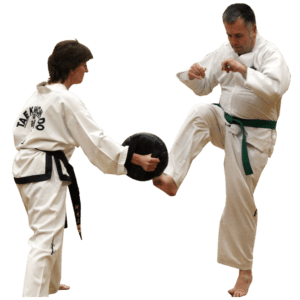
Whether you are using the Front or Rear leg, start by raising the knee of the kicking leg – also called “Chambering the Knee.” The same way you Chamber a gun ready to fire it. However, with a kick, you do not want to pause between Chambering and Firing!
If you are using the Knee as the striking tool, you’re pretty much there. There are three main reasons for raising you knee high:
- Allows the foot to extend to the Low, Middle or High section target in a direct/straight line much like and Bullet from a gun.
- Kicking from a high position masks the target and gives your opponent less time to react. You have the possibility of changing direction too if the target changes.
- The example in (2) above where the kick has a greater range of targets, means that the opponent needs to cover more bases. It will be much harder to block the kick that begins from an elevated position. Blocking a kick that rises up is easy.
The word “Tool” refers to the part of the body that is being used to attack or defend. For example, the “Ball Of Foot” is the the part of the Foot used for a Front Snap Kick.
Examples of Tools can be found here.
It isn’t considered useful to attack the High Section with a Front Kick because your balance is compromised and your leg could be caught or swept from under you.
Full Power Front Kick at Full Extension
If you watch a Taekwondo Beginner you will see them work extremely hard – but striking and kicking using tense body movements, they’re tight and unrelaxed. With very few exceptions, you should be in a relaxed state when executing techniques and movements. This allows you to move faster and change direction if necessary. It also conserves energy and you don’t tire as quick. It also helps prevent muscle tears and worse, tendon or ligament damage.
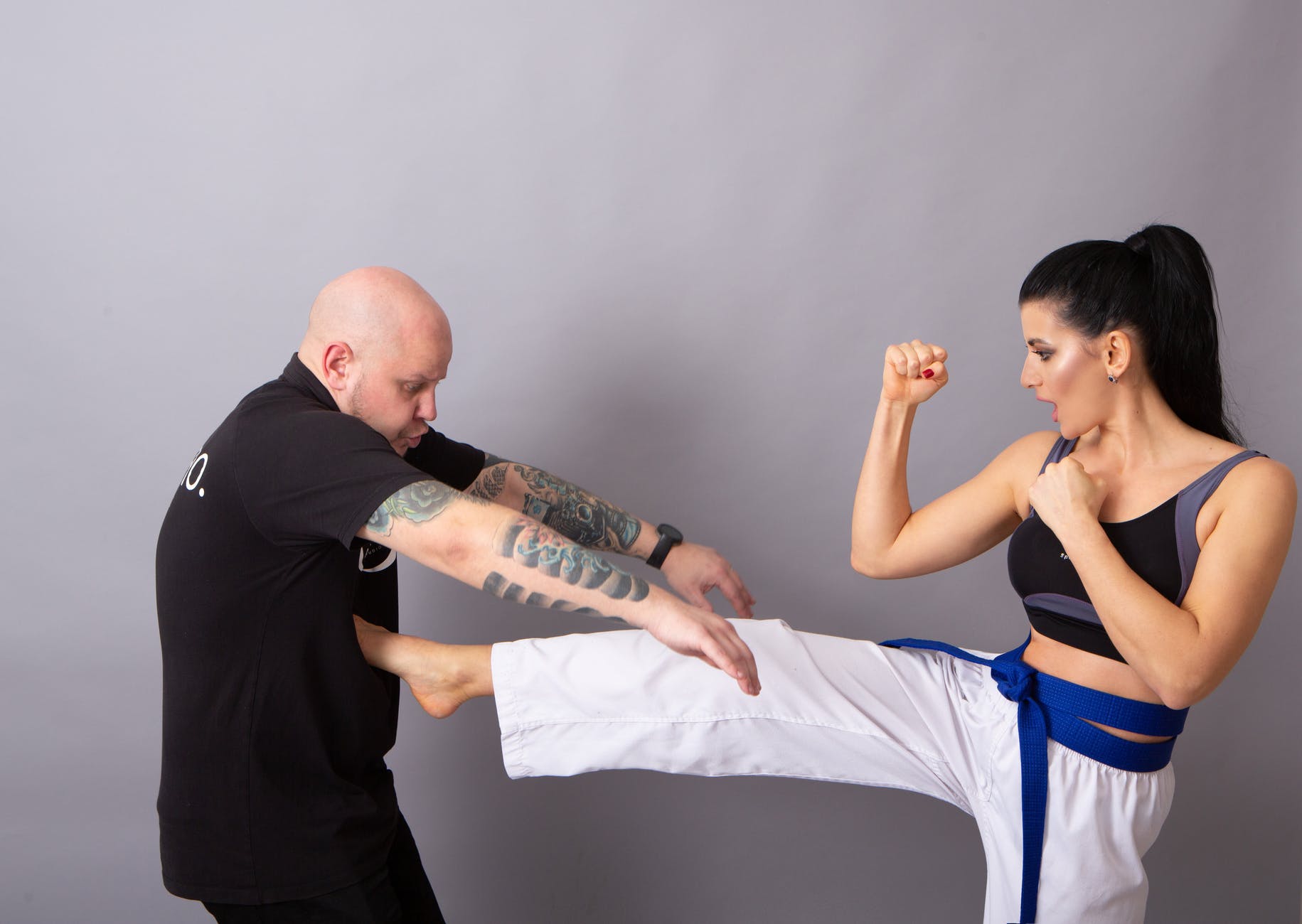
Tense your body at full extension when you make contact with the target. This locks your body into one solid Mass. Then as soon as you hit the target, relax again. The larger the Mass, the greater the Force. Though you can’t suddenly increase you entire Mass, you can kick with devastating force if you lock as much of your Mass into the technique.
So How Do I Lock My Mass?
Tense the body at the moment of impact. At the moment of impact, the body’s core and leg muscles that generate the kick, should be contracted. This will ensure as much force is transferred into the target.
**PICTURE MASS INFO GRAPHIC?
Think about striking a golf ball with a real golf club verses hitting the ball with an inflatable golf club. The inflatable gold club is likely to collapse, bend and have little effect on the gold ball. But the real golf club (as long as it’s not me playing) should send the golf ball sailing off into the distance.
This bending or collapsing in the example above absorbs the energy you are striking to put into the target (golf ball or opponents vital spot).
Striking Scientifically In Taekwondo
They say that Taekwondo is the most powerful Martial Arts. I disagree with this statement.
For me, it is the practitioner that is either Powerful or not. Taekwondo training should include the study and implementation of the Theory of Power which describes the principles you should follow in order to generate incredible Power. Below are 3 of the 6 principles from Taekwondo’s Theory of Power. Learn, use and understand these principles for all your techniques for devastating results:

Concentration Of Force
The Force of the technique should be concentrated through the smallest target area. There are a number of tools that could be used in a front kick (see below) but let’s look at the Front Snap Kick using the Ball of the Foot. This area of the foot will be used to drive the Force of your kick into the opponent. If you used the whole sole of the foot, the result is less devastating. Almost like a push. The surface area is greater and so the force s spread out more.
Example: Snow Shoes and Barefoot
If you went out in deep snow with snow-shoes, skis or even a sledge, you’d likely stay near the top the snow without too much affect – a nice little pattern in the snow and maybe a slide down the hill. The snow-shoes, skis and sledge all spread the force over a wider area; less concentrated.

However, if you were barefoot, or even with normal shoes on, it is likely that you would drop deeper into the snow because the Force of you stepping on the snow is more concentrated.
Think of the snow as your opponent, and the snow shoes represents you kicking with a Flat Foot, it makes little impact on the snow (your opponent). But if you use the Ball of the Foot smaller surface area), the Force of your kick is more concentrated and will inflict more damage onto the target.
[future post]: Concentration
Balance or Equilibrium
Your body needs to be steady so that all the energy is focused through the technique. Here are a few things to consider if you find yourself off-balance:
- Your body will use energy to regain balance,
- You may fall over,
- Even if you connect with the technique, it may have lost power,
- You will be open to an attack
[future post]: Balance/Equilibrium
Acceleration of Technique
It may be quite obvious, but it is not enough just to raise your leg up high and stick your foot out, hoping to connect with the opponent. It is likely that your opponent:
- will be expecting an attack,
- is trying to attack you and
- is moving (bonus if they are not).
Newtons 2nd Law Of Motion
Newton’s second law of motion says that acceleration happens when a force acts on an object. If you sit on a see-saw (just you), your side of the see-saw is going to drop to the ground. Gravity is the Force that is pulling you down to the ground and quite quickly too; around 10 meters per second (per second).
F = m x a
Force = mass times acceleration
I have seen many students over the years, practising their techniques and patterns without Accelerating (being lazy or not realising). This is bad practice as you will only get out, what you put in. In fact, you will get less out.
You get less out because physically you won’t be trying hard enough, not making headway, not releasing those chemicals that make you feel good and slowly but surely you’ll lose interest.
So make sure you put in maximum effort every time!
Think of it like a Race. Would a Formula 1 car start REALLY Fast, or just a Little Fast, to get the lead/pole position?
Each of the drivers are racing to get over the finish line before the others. So, think about performing each of your kicks, punches, strikes and even blocks as mini races. You have to get your first or foot to the target before the opponent beats you (blocks you, dodges out the way or smacks you first).
[future post]: Acceleration
The Snapping With Newton
F = m Δv
Δt
Force = mass x change in velocity divided by change in time
You may or may not have switched off already with all these equations but do you ever remember being told to retract punches or kicks as quick as possible once you’ve done them?
This will decrease the impact time (Δt). And if you half the impact time, you double the impact force.
I will try to explain what this formula means but before I do that, let’s see if I can explain the equation with the example of the Front Snap Kick:
- Accelerate Your Body while Kicking as fast as possible/required,
- So that as much Mass m is behind the tool of the foot, hitting the target,
- And the v (change in velocity, or acceleration is large).
- When you hit the Target, quickly retract you foot (snap),
- Because we want the (Δt) to be really small so that the Force is really big.
F is the Force, m is mass, v means velocity (think speed with direction) and the t is time.
In the equation above, the triangle () just means “change in”. So the equation reads:
The Force equals mass times the change in velocity (acceleration) divided by the change in time (or the time it took for the change in momentum to occur).
So what does this really mean?:
If we want to Increase our impact force when striking someone, we can control 3 things
- What we hit the target with,
- How much change in velocity (acceleration) we can generate and
- The most overlooked component is controlling the time of impact.
So, what if you are being attacked?
Would mean that you can reduce the force of an opponent’s strike, by increasing the impact time?
What is the Front Kick in Taekwondo Used For?
This technique is designed to attack the opponent that is in front of you and can be used to strike the face, solar plexus, abdomen scrotum, armpit, floating ribs and knees, coccyx (yes, even to the back), to name a few.
Of course, it does depend on the situation and your intention. Some examples of Situations could be:
- In the class
- At a Competition
- Being attacked (Self Defence).
So kicking the “bits and pieces” (scrotum, abdomen, etc), or lower, are probably not going to be “valid” targets.
And depending on the situation, your intention will be different:
- A startled reaction (so no real purpose, it’s just you’ve reacted),
- to score a point against the opponent (class/competition),
- to warn an attacker or
- stop an attacker.
The target and the level of Power is determined by the current situation and your intention. Being in a class or a competition dictates where you can strike and how much power you can deliver.
The Primary Targets of Taekwondo Front Kick
The Primary targets are normally defined with the assumption that your opponent is to the front of you. So that is how they will be described below. The Primary Targets of a Taekwondo are:
- Abdominal Area
- Scrotum
- Solar Plexus
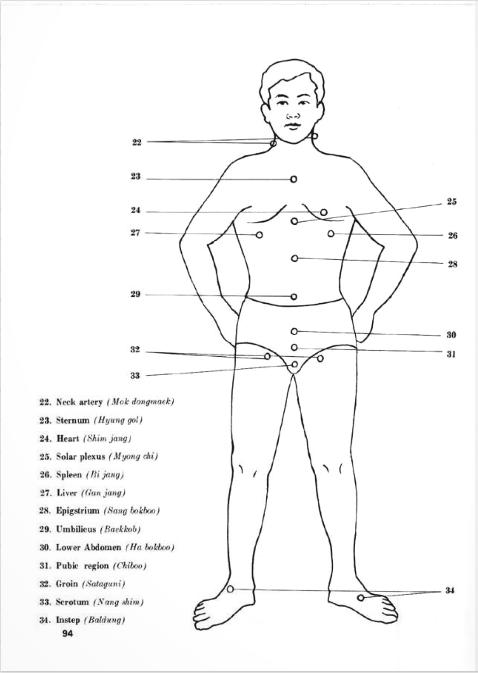
Parts of the Foot For Taekwondo Front Kick
The tool used will depend on the Target and Distance. Here are some of the tools available to you to perform that “Front Kick”:
- Ball Of Foot
- Instep
- Knee
- Toes
- Shin
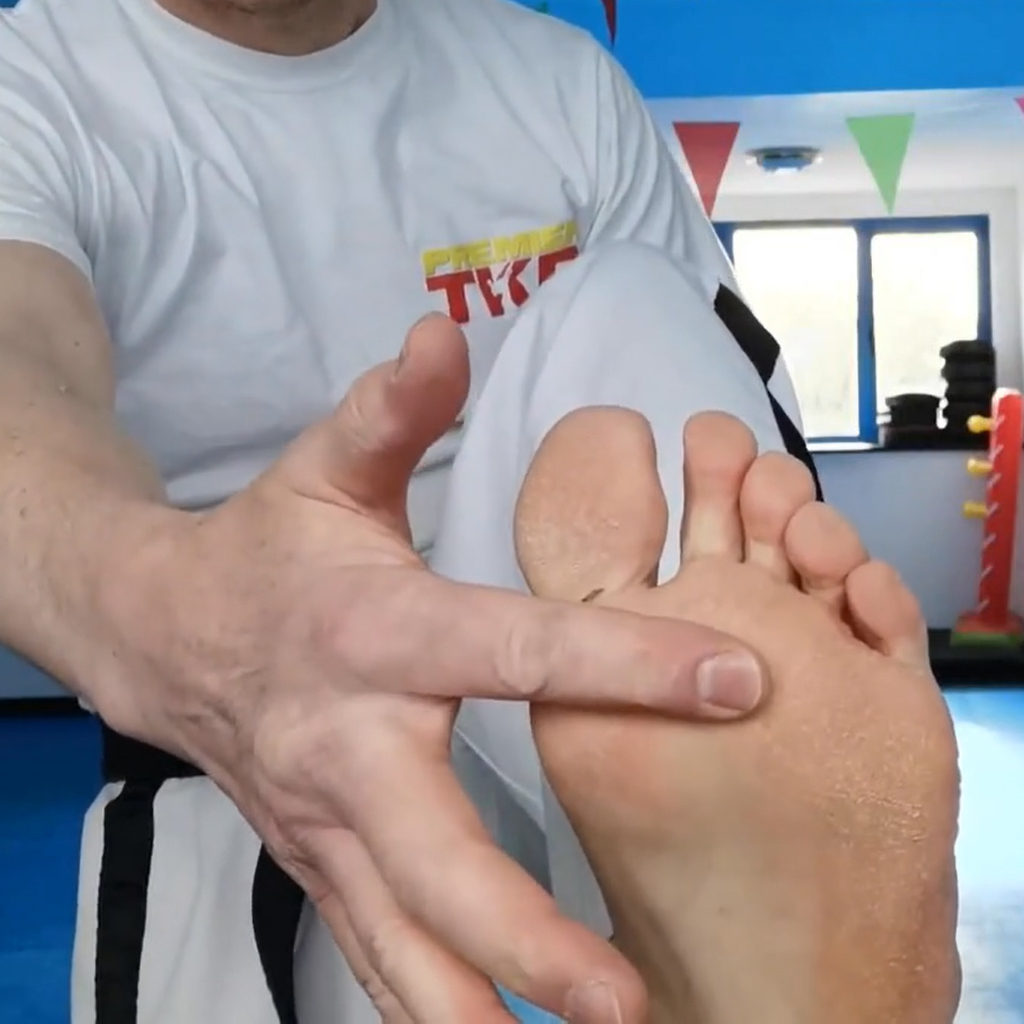
The situation and intention will dictate which tool you use. So too will the distance of the opponent. For example, if you are defending yourself and the opponent is very close, you may need to use your Knee rather than the toes. Or perhaps the opponent slides back to avoid your knee so you extend your leg to reach them with the ball of your foot or your toes.
Conditioning the Tools for the Taekwondo Front Kick
You may be wondering what “Conditioning” means. So let us look at that first.
Conditioning the tool simply means getting the tool accustomed to impact, to the point where the body can withstand high impact without damage or injury. In the martial arts, it is necessary ready the hands, feet and body for contact and impact so that if and when you have to hit really hard, you will not be (significantly) injured or damaged.
Conditioning doesn’t just mean the impact against the tool, it also includes the flexibility of the joints and tissue supporting the tool. For example:
- Front Kick that uses the Ball of the Foot requires the Toes to be pulled back – so can your toes do that?
- This kick also requires the ability to sustain impact on that area – start easy, build it up.
Any conditioning must start at Low Impact. That means, you do not suddenly whacking the fists, hands, feet, etc at maximum effort against a conditioning tool. Start light with simple exercises.
Seriously, No matter how tempting it is to try out your Super Powers!!
**PICTURE FRONT KICK CONDITIONING
What Muscles Are Used for the Front Kick?
It is important to know what muscles are being used so that you can condition them; develop and stretch. They will vary slightly depending on which tool you use, which leg (front or back) and whether you are jumping. The Muscles used can be broken down into Two types:
Key Dynamic Muscles For the Front Kick In Taekwondo
The Key Dynamic Muscles are the muscles that are used to accelerate the body during the kick. Take a minute and stand in your guarding stance and slowly perform the kicking action. See/Feel what muscles are being fired. The main muscles used are:
- In the Kicking Leg : Extension Quadriceps
- Hip Extension : Gluteus Maximus
- Rear Leg drive : Quadriceps, Calves
It is worth noting that the Hip Extension itself, involves the action of three muscles contracting in a coordinated sequence. We won’t be going too deep in this article, but feel free to look into the “Hip Extension,” the Gluteus Maximus, Biceps Femoris and Erector Spinae. Also, what muscles make up the Quadriceps.
Key Static Muscles For the Front Kick in Taekwondo
The Key Static Muscles are the muscles that are tensed but not moving. Their job is to help stability and put as much body mass behind the kick. Tensing muscles on impact is important because it adds to the Mass of the technique. Remember in the section “Full Power Front Kick at Full Extension” we looked at locking the body on impact to increase the Force of the technique. If not, go back and take a quick look.
Muscles under tension include:
- Rectus Abdominis
- Calves
Feel free to look at the muscles that make up the Calves, namely the Soleus and Gastrocnemius).
Primary Kinetic Chain For the Front Kick In Taekwondo
The Primary Kinetic Chain was a concept first introduced by the mechanical sngineer Franz Reuleaux (1829-1905) where he proposed that rigid, overlapping segments were connected via joints and this created a system whereby movement at one joint produced or affected movement at another joint in the kinetic link.
It was later in 1995 that Dr Arthur Steindler adapted Reuleaux’s theory to include the analysis of human movement, sport-specific activity patterns and exercise and defined the kinetic chain as a “combination of several successively arranged joints constituting a complex motor unit.”
For the Front Kick, there are 3 Kinetic chains to consider:
Posterior Kinetic Chain
Used in driving the hips forward (pelvic thrust). Muscles are on the rear (posterior) side of the body ranging from the hamstrings in the legs all the way up to Latissimus Dorsi (Lats) in upper back.
Hip Turn Kinetic Chain
A short ranging but very strong movement that is used in rotating the body. Of course the Hip-Twist in martial arts techniques will use this chain frequently.
Leg Extension Kinetic Chain
A long-ranging and strong drive involves extending the leg at the hip, knee and ankle joints. You will use this chain when kicking or throwing.
Exercises for Developing the Front Kick in Taekwondo
Your daily practice should include basic joint movements, callisthenics, which is basic exercises to keep the body fitness and moving. This is usually done from Top to Bottom, visiting each joint and moving in the way it was designed to move – this isn’t the same as cracking or popping your joints!
When Exercising (strengthening, stretching, etc) the muscles, make sure you work on both sides of the body and in equal measure. It is also worth noting that the muscles (and joints) you work on have opposite muscles and supporting muscles (agonists, antagonists and synergists).

The Hyperbolic Stretching®
This Follow-Along Video Program is provided to you instantly in online video format. It can be accessed worldwide, regardless of location. All videos can be easily viewed on mobiles, tablets, laptops etc.
Revealed: The Natural Muscle Survival “Loophole” Anyone Can Use To Achieve Full Flexibility, Boost Core Body Strength And Relieve Lower Back, Hips & Upper Body In Just 4 Weeks Of Stretching Less Than 8 Minutes Per Day.
(Regardless Of Age, Body Type Or Current Physical Condition)
Designed For Flexibility, Splits, Strength And Relief!
For the Front Kick, we need to make sure we can flex and extend our toes freely so that when we use the Ball of the Foot to strike, the toes can be pulled back enough and be strong enough to take the impact. We want to gradually (over multiple sessions) increase the range of motion in the toes and strength in the chain (see Leg Extension Kinetic Chain).
The ankles must also be flexible to get into the correct shape for impact but also the muscles supporting them, need to be strong enough to withstand the impact and keep the foot in the flexed position.
The Knees needs to be bent, raised and then straightened when you are front kicking so you can practice the action of Front Kicking – lifting the knee up high and extend the foot away.
Traditionally, the Front Kick in Taekwondo, the Hips, Feet and Belly, should be facing Forwards. If you shift your supporting foot out when you are Front Kicking, you are executing a Side-Front Kick. This will be tricky to start with unless you have good flexibilty in your legs, because in most people, the supporting leg/foot does tend to drift out.
However, the biggest issue with this is (lateral) hamstring flexibility. The two outside head of the hamstrings (Biceps Femoris) are often tighter than the two medial heads. This makes the kick thrown directly in front more challenging than the Side-Front Kick.
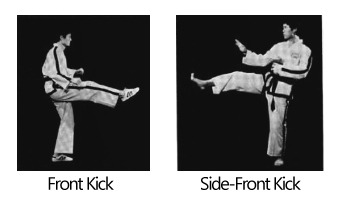
Stretching for the Front Kick In Taekwondo
There are many stretches for the muscles (and groups) but here are a few of the key stretches to focus on. You will find stretching videos on the website and YouTube channel (details below).
- In the Kicking Leg : Extension Quadriceps
- Hip Extension : Gluteus Maximus
- Rear Leg drive : Quadriceps, Calves
- Rectus Abdominis
- Calves
**LINK ELASTIC STEEL
Training the Front Kick In Taekwondo
You can develop your muscles by simply executing the front kick over and over again. Start off slow to warm up the muscles and gradually increasing the speed, intensity and impact. In other words, you have to practice kicking and hitting something. You need to train the body and brain to do that technique and various speeds, heights and even directions.
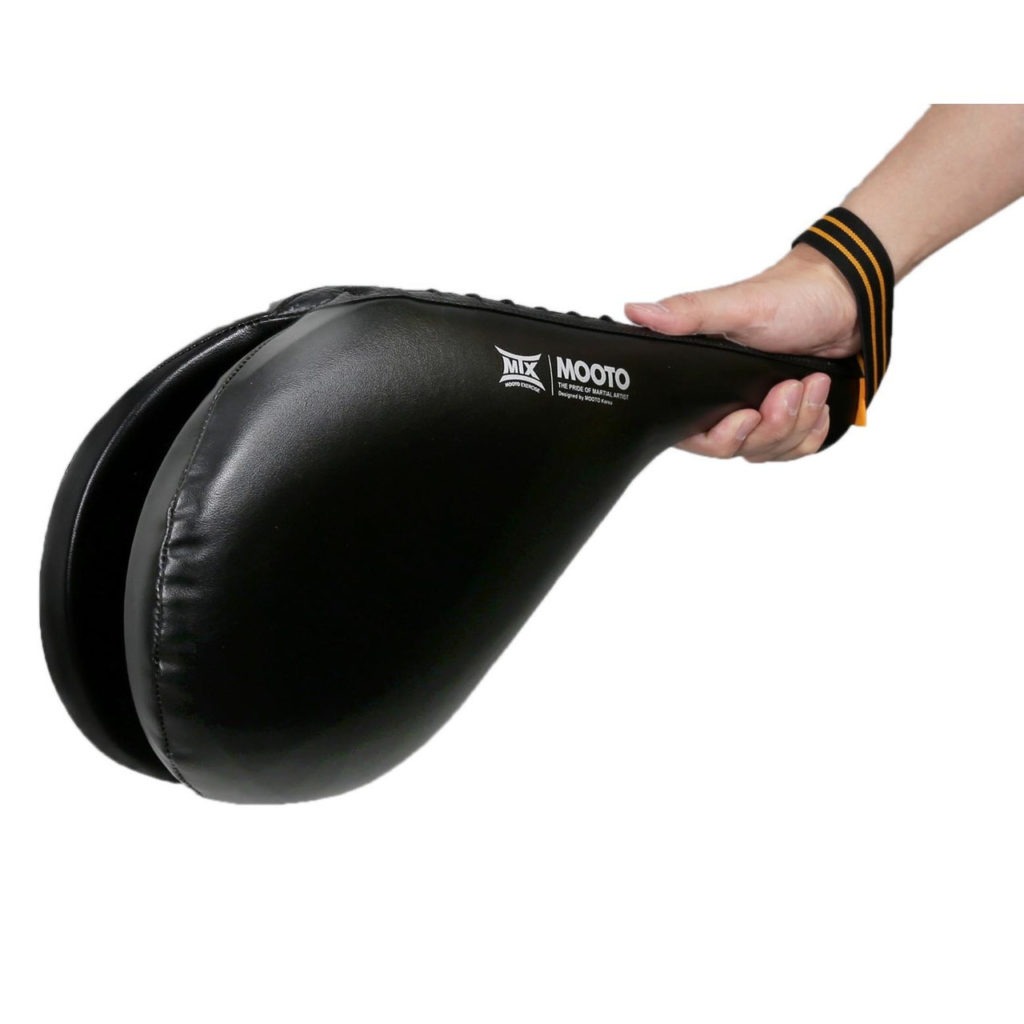
PADDLES
Pad or Paddle work, where someone is holding the paddles for you to strike. Static to start with and then the paddle holder can start moving around in different directions and placing at various heights – emulating a moving opponent. There are so many variations to this type of training. For example, the paddle holder could also attack causing you (the practitioner) to guard, change stance, change technique or position, and so on.
KICKBAGS
Kickbags are another useful tool. Hanging Kickbags are great if you have a garage to hang/store them, it can be quite an expensive training aid. The Freestanding versions are a lot more expensive but you dont need to sorry about hanging them off something. And their movement is limited.
Partners are always good to hit and If you have someone trying to hit you back then that’s going to make it tougher and more akin to real fighting.

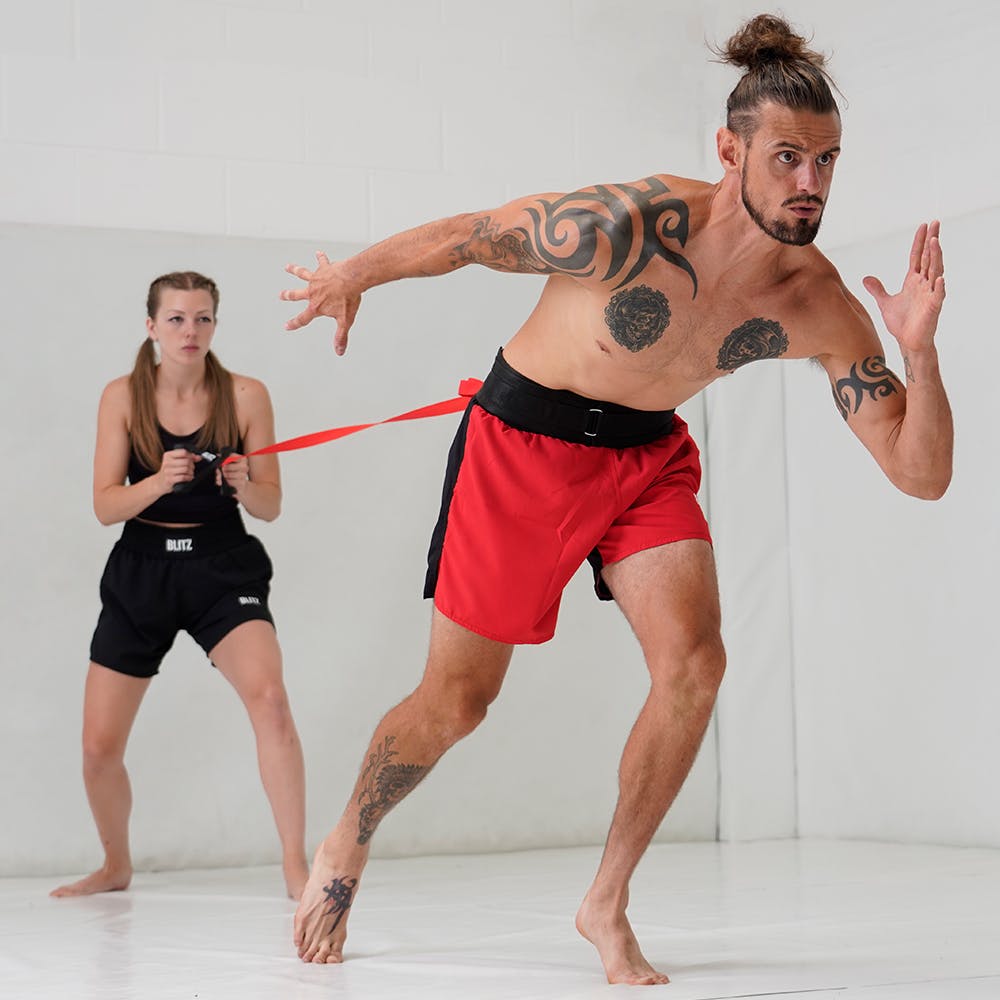
RESISTANCE AIDS
You can add resistance. There are bands that attach to you, a partner or a stationary object. Make sure you choose your partner wisely – you don’t want them letting go of the elasticated band!
Leg weights or weighted Jackets are another option. When you take the weights off, your body will feel much lighter and flightier. Be sensible with the weight though as you could injure yourself if you go too heavy. The slightest weight increase will be affective.
So I’ll say it again – start off light (under 1kg for me)!
You could also try training in water. Next time you’re at the swimming pool or the beach, start off in ankle depth water and slowly increase depth to the knee level. You could also use a weighted jacket, especially if jumping or sparring.
Disclaimer!: please be careful training in/near water, especially with additional weights!




